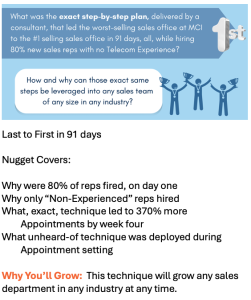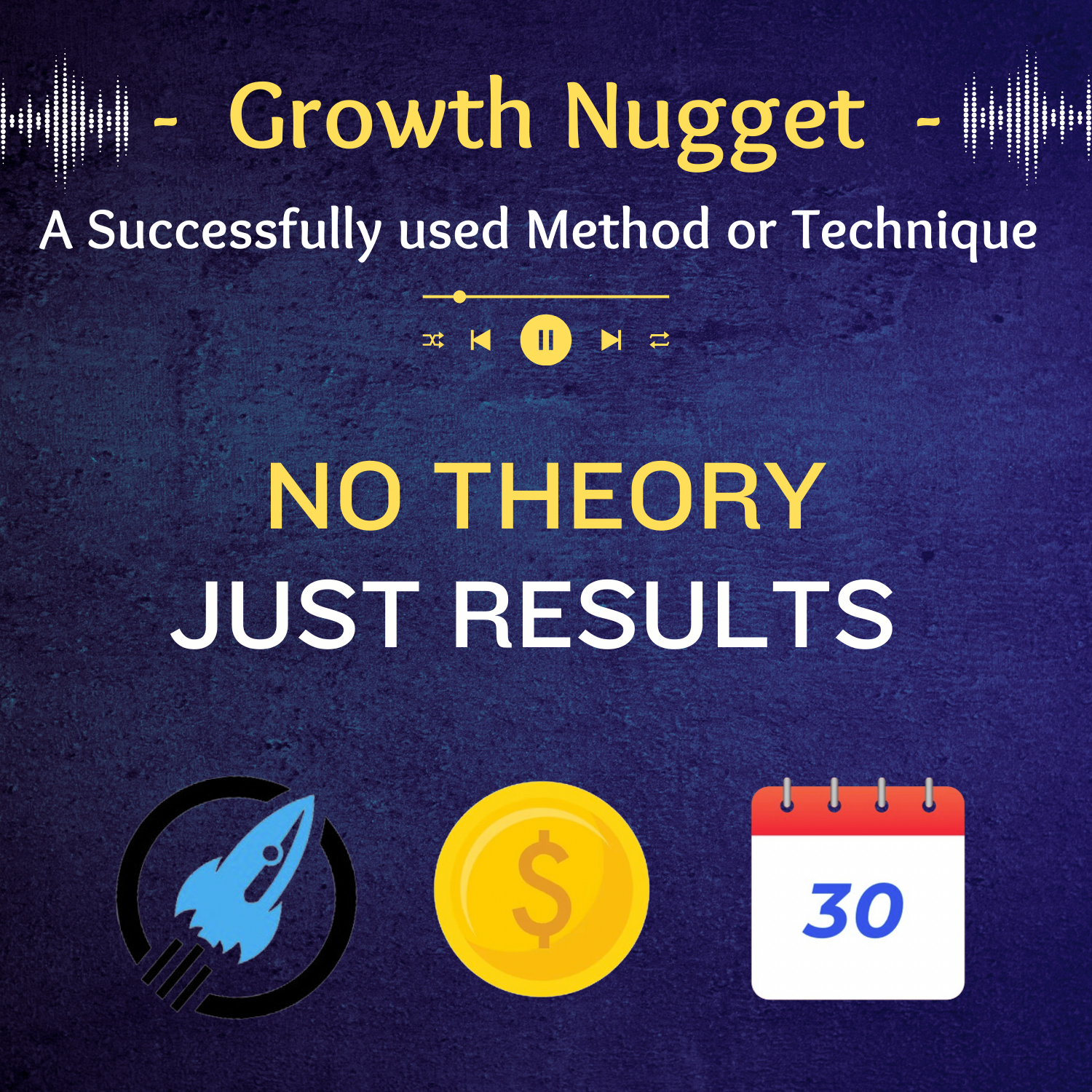Growth Is About Who
$23.00
(0:00 – 0:21)
How come 439 of the Fortune 500 from 1955 are no longer here? And you might say, well, yeah, that’s 61 years ago. Yeah, but the industries they were all in are still around. There’s now a bigger player in their space.
(0:22 – 1:10)
So the question is, how do the biggest companies in their industry, with supposedly the smartest minds in sales, marketing, management, product development, how do they go away and literally shut down when there’s dozens, if not hundreds, of other companies that survived and passed them in the exact same space? What happened? In the majority of these cases, those companies did not grow because the leadership of those companies had risen to their level of incompetence. They stopped learning, and more importantly, as proof that other companies began passing them by, they chose not to bring in outside help. As Zig Ziglar put it, they cooked in the squat.
(1:11 – 1:22)
They got stuck in, the market will come back, or they got stuck in, tomorrow will be better. And we all know tomorrow is great every day for those that make it so. So here we go.
(1:22 – 1:35)
We are on the bottom left of the growth checkup chart. Let’s look at the few reasons growth may have stopped or slowed today. See if you can find yourself in any of these following scenarios.
(1:36 – 1:50)
You were inspired, had an idea, started a company, went to work, and sold a great deal, and now things are flat. Or maybe you used to be an independent contractor or a sales rep for a company. You left them to start a similar product line.
(1:51 – 2:02)
Your company sold for a while. Now things are flat. Or maybe you worked for a company in the back end, either in manufacturing, accounting, but you were part of something great, something profitable.
(2:03 – 2:10)
You left, started a fast-growing company on your own. Now things are flat. Or maybe you joined a well-oiled team.
(2:10 – 2:28)
You were part of a team, and the product had been selling for years, and you played a major role. And now all on that team are trying new techniques monthly, but nothing is resurrecting sales. Or maybe you sold for a company, learned how to sell anything, and you left to start your own company.
(2:29 – 2:39)
You grew for a while, and now you’re flat. Or you had an idea. You raised a lot of capital, built something quick, sold a little bit, but didn’t establish long-term proof of concept.
(2:39 – 2:56)
Or possibly you started something or joined a team in another way, part of something special. You grew like a rocket, and suddenly the bottom fell out, and death was instant. Here’s what is great about every one of those kind of slow death scenarios.
(2:57 – 3:09)
Past growth is not an indicator of future growth. That is principle number one that undergirds all growth. Well, principle number one has a reciprocal.
(3:09 – 3:21)
I call this the resurrection principle. You ready for this? The resurrection principle. Current failure to grow is not an indicator of future death.
(3:22 – 3:32)
Let me repeat this. Current failure to grow is not an indicator of future death. Now, death is not inevitable.
(3:33 – 3:46)
Product death is inevitable. Every product will die 100%, as you heard me say 10 times. 100% of main sources of income fail for a household and any company.
(3:47 – 3:54)
You take any company today, their number one revenue stream will fail. No question. Doesn’t mean the company’s going to fail.
(3:54 – 3:59)
Doesn’t mean the household’s going to fail. But jobs get lost, products change, markets change. That’s how it goes.

(0:00 – 0:21)
How come 439 of the Fortune 500 from 1955 are no longer here? And you might say, well, yeah, that’s 61 years ago. Yeah, but the industries they were all in are still around. There’s now a bigger player in their space.
(0:22 – 1:10)
So the question is, how do the biggest companies in their industry, with supposedly the smartest minds in sales, marketing, management, product development, how do they go away and literally shut down when there’s dozens, if not hundreds, of other companies that survived and passed them in the exact same space? What happened? In the majority of these cases, those companies did not grow because the leadership of those companies had risen to their level of incompetence. They stopped learning, and more importantly, as proof that other companies began passing them by, they chose not to bring in outside help. As Zig Ziglar put it, they cooked in the squat.
(1:11 – 1:22)
They got stuck in, the market will come back, or they got stuck in, tomorrow will be better. And we all know tomorrow is great every day for those that make it so. So here we go.
(1:22 – 1:35)
We are on the bottom left of the growth checkup chart. Let’s look at the few reasons growth may have stopped or slowed today. See if you can find yourself in any of these following scenarios.
(1:36 – 1:50)
You were inspired, had an idea, started a company, went to work, and sold a great deal, and now things are flat. Or maybe you used to be an independent contractor or a sales rep for a company. You left them to start a similar product line.
(1:51 – 2:02)
Your company sold for a while. Now things are flat. Or maybe you worked for a company in the back end, either in manufacturing, accounting, but you were part of something great, something profitable.
(2:03 – 2:10)
You left, started a fast-growing company on your own. Now things are flat. Or maybe you joined a well-oiled team.
(2:10 – 2:28)
You were part of a team, and the product had been selling for years, and you played a major role. And now all on that team are trying new techniques monthly, but nothing is resurrecting sales. Or maybe you sold for a company, learned how to sell anything, and you left to start your own company.
(2:29 – 2:39)
You grew for a while, and now you’re flat. Or you had an idea. You raised a lot of capital, built something quick, sold a little bit, but didn’t establish long-term proof of concept.
(2:39 – 2:56)
Or possibly you started something or joined a team in another way, part of something special. You grew like a rocket, and suddenly the bottom fell out, and death was instant. Here’s what is great about every one of those kind of slow death scenarios.
(2:57 – 3:09)
Past growth is not an indicator of future growth. That is principle number one that undergirds all growth. Well, principle number one has a reciprocal.
(3:09 – 3:21)
I call this the resurrection principle. You ready for this? The resurrection principle. Current failure to grow is not an indicator of future death.
(3:22 – 3:32)
Let me repeat this. Current failure to grow is not an indicator of future death. Now, death is not inevitable.
(3:33 – 3:46)
Product death is inevitable. Every product will die 100%, as you heard me say 10 times. 100% of main sources of income fail for a household and any company.
(3:47 – 3:54)
You take any company today, their number one revenue stream will fail. No question. Doesn’t mean the company’s going to fail.
(3:54 – 3:59)
Doesn’t mean the household’s going to fail. But jobs get lost, products change, markets change. That’s how it goes.


